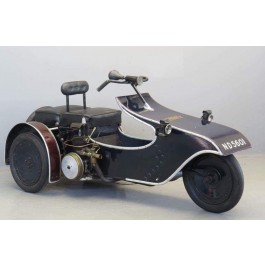Browse By
|
HarperDescriptionThe Harper, manufactured by A.V. Roe and Co Ltd, first appeared in Manchester (UK) in 1921. The “Harper Runabout” was designed by R. O. Harper and was made in the A.V. Roe and Co Ltd aircraft factory. The vehicle had a body that was constructed from plywood strengthened by metal castings. The power came from a centrally mounted two-stroke, single cylinder 269cc Villiers engine through a 3-speed gearbox that was controlled by motorcycle handlebars. The seats were also very close to a motorcycle style in that there was two in tandem that were motorcycle seats rather than a car type chair. Detailed Information
|





